Hops in Homebrewed Beer: Introduction for Beginners
Published: July 19, 2025 at 8:47:40 PM UTC
Hops are the green, cone-shaped flowers that give your homebrewed beer its distinctive bitterness, flavor, and aroma. They've been used in brewing for over a thousand years, not just for their flavor-enhancing properties but also as natural preservatives. Whether you're brewing your first batch or looking to refine your hopping techniques, understanding these remarkable ingredients will transform your homebrewing experience from simple fermentation to crafting truly exceptional beer.
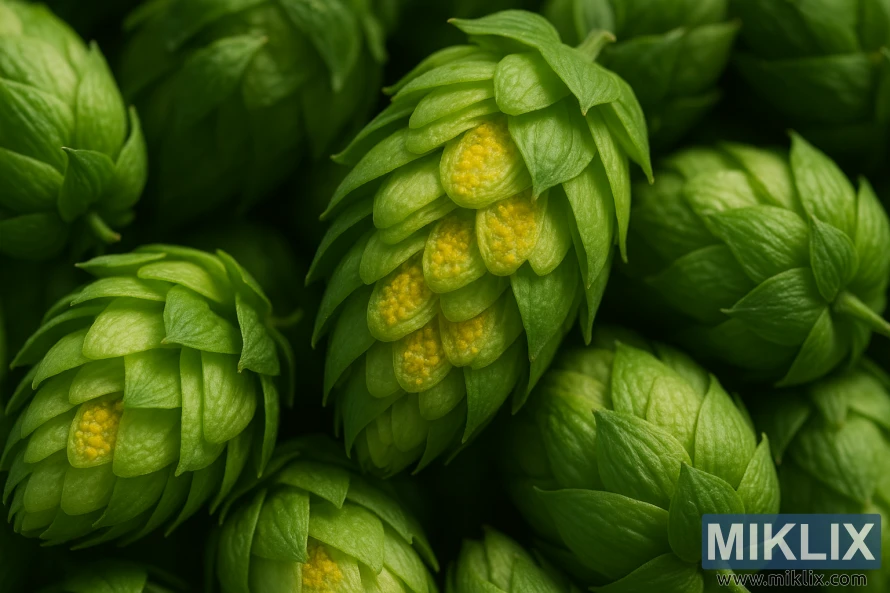
Essential Characteristics of Hops in Homebrewed Beer
Hops contribute three primary elements to your beer: bitterness to balance the sweetness of malt, distinctive flavors ranging from citrus to pine, and enticing aromas that enhance the drinking experience. Understanding the chemical composition of hops helps you make better brewing decisions.
The Chemistry Behind Hops in Homebrewed Beer
- Alpha Acids - These compounds (humulone, cohumulone, adhumulone) isomerize during boiling to create bitterness. Higher alpha acid percentages mean more potential bitterness.
- Beta Acids - Contributing less to bitterness than alpha acids, these compounds oxidize over time and can add some bitterness during storage.
- Essential Oils - Volatile compounds that provide flavor and aroma. These include myrcene (herbal), humulene (woody), caryophyllene (spicy), and farnesene (floral).
Hop varieties are often categorized based on their typical use in the brewing process. Understanding these categories helps you select the right hops for your homebrewed beer.
Bittering Hops
These varieties contain high alpha acid percentages (typically 8-20%) and are added early in the boil. Examples include Columbus, Magnum, and Warrior. They provide strong bitterness but much of their flavor and aroma compounds boil off during the long boil time.
Aroma Hops
These hops have lower alpha acid content but are rich in essential oils. They're added late in the boil or during dry hopping to preserve their delicate aromas. Popular varieties include Saaz, Hallertau, and Tettnanger, known for their refined, subtle characteristics.
Using Hops in Your Homebrewed Beer
The timing of hop additions dramatically affects your beer's final character. Early additions contribute primarily to bitterness, while late additions preserve the delicate flavors and aromas that make each hop variety unique.
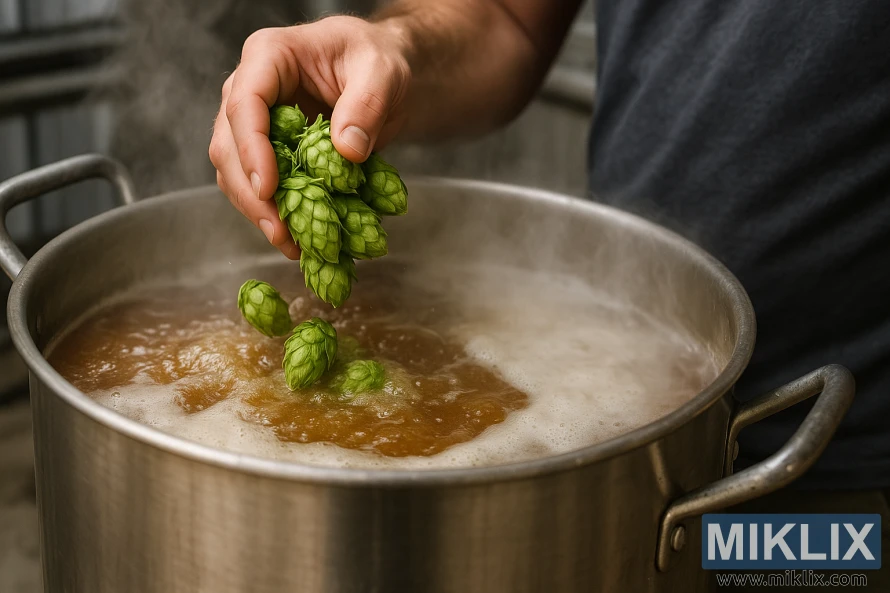
Boil Timing and Bitterness Extraction
The longer hops boil, the more alpha acids isomerize into iso-alpha acids, creating bitterness. However, this extended boiling also drives off the volatile oils responsible for flavor and aroma.
| Addition Time | Purpose | IBU Contribution | Flavor/Aroma Retention |
| 60 minutes | Bittering | Maximum (25-35% utilization) | Minimal |
| 30 minutes | Bittering/Flavor | Moderate (15-25% utilization) | Low |
| 15 minutes | Flavor | Low (10-15% utilization) | Moderate |
| 5 minutes | Aroma/Flavor | Minimal (5% utilization) | High |
| Flameout/Whirlpool | Aroma | Very low (2-3% utilization) | Maximum |
Dry-Hopping Techniques for Enhanced Aroma
Dry hopping involves adding hops after the primary fermentation has completed. Since no heat is involved, this technique preserves delicate aromas that would otherwise be lost during boiling. For a 5-gallon batch, 1-2 ounces of hops is typical, though hoppy IPAs might use 3-4 ounces or more.
Dry Hopping Benefits
- Maximizes hop aroma without adding bitterness
- Creates fresh, vibrant hop character
- Allows for layering of different hop varieties
- Can be done in primary or secondary fermenter
Dry Hopping Considerations
- Extended contact (>14 days) can create grassy flavors
- Requires careful sanitation practices
- May cause additional sediment in the final beer
- Can be difficult to remove hops from carboys

Popular Hop Combinations in Homebrewed Beer
Combining different hop varieties can create complex flavor profiles that exceed what any single hop can provide. Here are some classic combinations that work well in homebrewed beer:
American IPA Blend
- Hops: Cascade, Centennial, Simcoe
- Character: Citrus, pine, and floral notes with moderate bitterness
- Best For: American IPAs, Pale Ales
European Noble Blend
- Hops: Saaz, Hallertau, Tettnanger
- Character: Spicy, floral, and herbal with refined bitterness
- Best For: Pilsners, German Lagers
New World Tropical Blend
- Hops: Citra, Mosaic, Galaxy
- Character: Tropical fruit, citrus, and berry notes
- Best For: NEIPAs, Modern IPAs
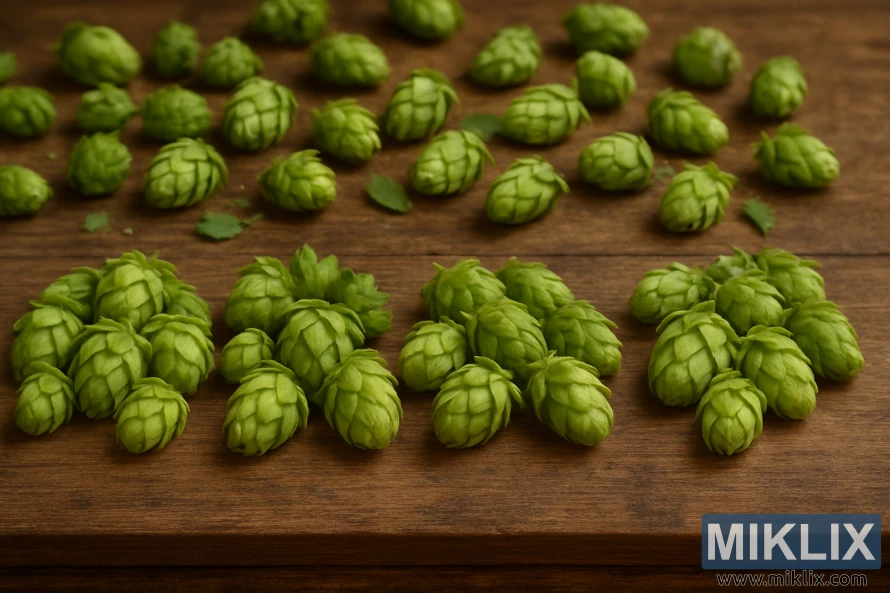
Top 5 Hops for Beginners in Homebrewed Beer
When you're just starting your homebrewing journey, choosing the right hops can be overwhelming. These five versatile varieties offer excellent results across multiple beer styles and are forgiving for beginners.
| Hop Variety | Typical Use | Flavor Notes | Best Beer Styles | Alpha Acid % |
| Cascade | All-purpose | Citrus, floral, grapefruit | American Pale Ale, IPA | 4.5-7% |
| Citra | Aroma/Flavor | Tropical fruit, citrus, mango | IPA, Pale Ale, Wheat Beer | 11-13% |
| Centennial | Dual-purpose | Citrus, floral, resinous | American Ales, IPAs | 9-11.5% |
| Hallertau | Aroma | Floral, spicy, herbal | German Lagers, Pilsners | 3.5-5.5% |
| Mosaic | Aroma/Flavor | Blueberry, tropical, pine | IPA, Pale Ale, Session Ale | 11-13.5% |
Real-World Brewing Scenario: Simple Pale Ale
For a beginner-friendly 5-gallon American Pale Ale with balanced hop character:
Simple Pale Ale Hop Schedule
- 0.5 oz Centennial (10% AA) at 60 minutes (bittering)
- 0.5 oz Cascade (5.5% AA) at 15 minutes (flavor)
- 1 oz Cascade at flameout (aroma)
- 1 oz Cascade dry hop for 5 days before bottling
This schedule creates approximately 40 IBUs with a pleasant citrus-floral aroma and balanced bitterness.
Real-World Brewing Scenario: Hoppy IPA
For homebrewers ready to create a more hop-forward IPA with complex character:
Modern IPA Hop Schedule
- 1 oz Magnum (12% AA) at 60 minutes (clean bittering)
- 1 oz Citra at 10 minutes (flavor)
- 1 oz Mosaic at 5 minutes (flavor/aroma)
- 1 oz each Citra and Mosaic at flameout (aroma)
- 1.5 oz each Citra and Mosaic dry hop for 5-7 days
This schedule creates approximately 65 IBUs with intense tropical fruit and citrus character.
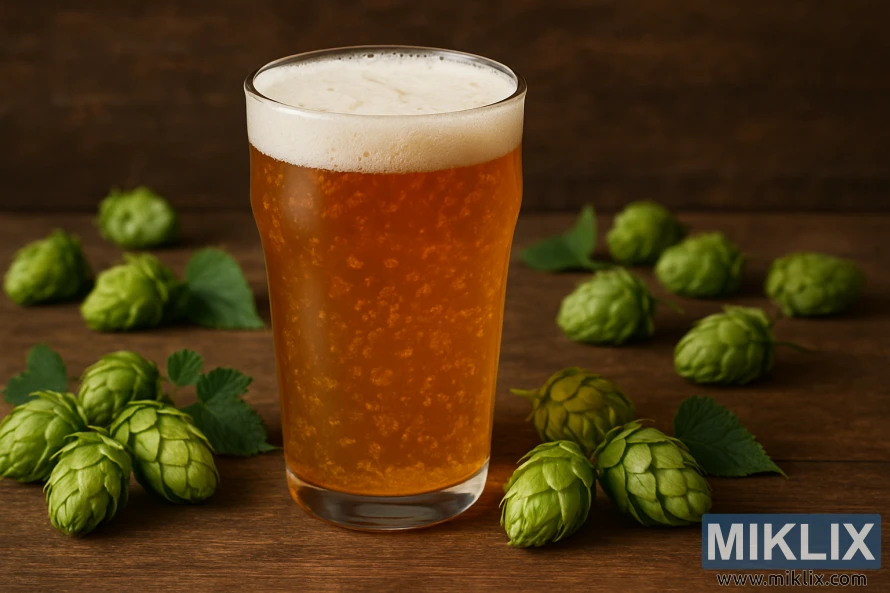
Common Mistakes When Using Hops in Homebrewed Beer
Even experienced homebrewers occasionally make mistakes with hops. Understanding these common pitfalls will help you avoid wasting ingredients and ensure your homebrewed beer showcases hops at their best.
Over-Hopping Your Homebrewed Beer
While "more is better" might seem logical, excessive hopping can create unpleasant flavors and aromas in your beer. Too many hops can lead to harsh bitterness, vegetal flavors, or an astringent mouthfeel that overwhelms other beer components.
Signs You've Over-Hopped Your Beer:
- Harsh, lingering bitterness that coats the palate
- Grassy or vegetable-like flavors
- Overwhelming hop aroma that masks malt character
- Astringent mouthfeel or tannic sensation
Improper Hop Storage
Hops degrade quickly when exposed to oxygen, light, and heat. Improper storage leads to oxidation, which diminishes both alpha acids and essential oils, resulting in less effective bittering and diminished aroma.
Hop Storage Best Practices:
- Store hops in vacuum-sealed bags or oxygen barrier containers
- Keep hops in the freezer at temperatures below 28°F (-2°C)
- Minimize exposure to air when packaging
- Use within 1-2 years for best results
- Once opened, use quickly or reseal and return to freezer
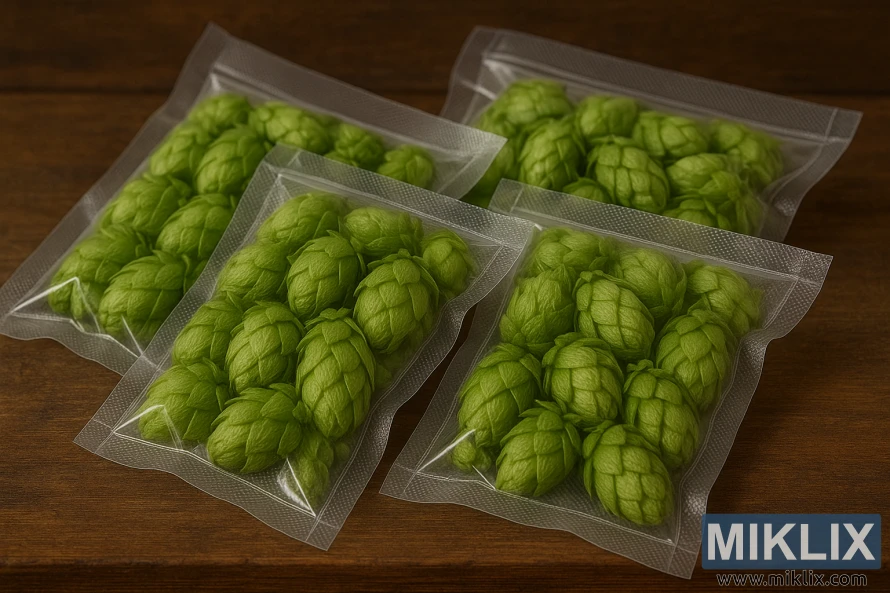
Mismatching Hops with Yeast and Malt Profiles
Not all hop varieties complement all beer styles. Using inappropriate hop varieties can create flavor clashes that detract from your beer's overall quality.
Complementary Combinations:
- American hops (Cascade, Centennial) with clean American ale yeast
- Noble hops (Saaz, Hallertau) with German lager yeast
- British hops (East Kent Goldings, Fuggles) with English ale yeast
- New World hops (Citra, Mosaic) with neutral or fruity yeast strains
Clashing Combinations:
- Aggressive American hops in delicate European lagers
- Subtle Noble hops in bold American IPAs
- Fruity New World hops with phenolic Belgian yeasts
- High alpha bittering hops in malt-forward styles
Conclusion
Hops are truly the spice of beer, offering endless possibilities for creating unique and delicious homebrewed creations. As you continue your brewing journey, don't be afraid to experiment with different varieties, combinations, and techniques. Keep detailed notes about your hop usage and the resulting flavors to refine your approach over time.
Remember that proper hop selection, timing, quantity, and storage are key to achieving the best results. Start with the recommended beginner-friendly varieties, then gradually expand your hop repertoire as you gain confidence and experience.
For further exploration, consider consulting hop substitution charts when your preferred variety isn't available, or join a local homebrewing club to share experiences and sample different hop-forward beers. The world of hops is vast and ever-evolving, with new varieties being developed regularly.
Further Reading
If you enjoyed this post, you may also like these suggestions:
